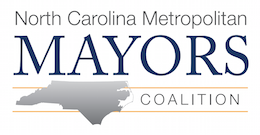Western North Carolina train plans take back seat (Asheville Citizen Times)
A long-stalled plan to bring passenger trains to Asheville could inch forward in the next few months, but it lags other rail projects as a top state priority.
Faster train rides through major population centers will stay at the top of state officials’ wish list.
North Carolina has applied for more than $5 billion in stimulus funding for rail, ambitious considering the federal government is allocating just $8 billion nationwide. But a fraction would go to bringing service to the mountains.
The project isn’t on a high-speed corridor and isn’t yet shovel-ready, said Shirley Williams, environmental and planning director for the state Rail Division.
So the only stimulus money it qualifies to receive is $3 million for engineering and environmental study that it would have to split with a planned Raleigh-to-Wilmington expansion.
Supporters of westward expansion remain optimistic.
“I think it’s going to get done,” said Judy Ray, longtime chairwoman of the Western North Carolina Rail Corridor Committee. “We appear to be closer to getting the engineering study done and some of that behind us, and then we can get on with working on the service.”
Big price tag
The plan is for a 79 mph Amtrak route from Asheville to Salisbury, with fare-paying travelers and state taxpayers picking up the tab for running the trains.
Long before the first train leaves the station, though, it will be a costly project.
Rail must be straightened, elevated, rerouted to avoid some roads and double-tracked in places to allow passenger trains to pass plodding freight trains. New signals are needed.
The project was once estimated at about $130 million but now would cost closer to $200 million, Williams said.
That doesn’t include a projected $30 million to build and expand train stations along the route.
Old Fort, Marion and Morganton renovated their historic stations in 2004 and 2005, joining Statesville, but stations have yet to be built at stops like Valdese, Black Mountain and Asheville. And all the stations need new platforms.
Officials have picked out the site for an end-of-the-line station in Biltmore Village.
Williams hopes the federal government, which is now weighing how to distribute an unprecedented amount of rail funding from the stimulus, could chip in for WNC as well. There’s talk in Congress of more rail funding in future years, she said.
“I guess I’m hopeful that with the interest in having an alternative transportation system, that rail is going to get more funding,” she said.
For now, though, just $2 million in state and federal funds would be spent on the Asheville line, if the Obama administration chips in its share.
Main routes take priority
Passenger rail to Asheville began in 1880 and eventually linked the area with cities like New Orleans, Chicago and New York, according to a Department of Transportation study. The routes were popular with wealthy families who headed to the mountains for summer vacations.
Norfolk Southern Corp. ended regular service to Asheville in 1975. The company has said the trains had too few riders outside of peak tourist season.
Today, Asheville is the most-requested destination that Amtrak doesn’t serve, Williams said.
First up on the state’s priority list, though, is fast-tracking existing rail service. Most of the $5 billion requested would upgrade track from Charlotte to Greensboro to Raleigh and points north.
The goal is for trains to zoom along at top speeds of 90-110 mph between Charlotte and Washington.
Rep. Ray Rapp, a leading advocate in the General Assembly for expanding rail to the mountains, said the state needs to improve its main “arteries” before tapping new “veins” like the one to Asheville.
“I think it will eventually happen, but what we’ve got to do is put this system together piece by piece,” said Rapp, a Mars Hill Democrat.
Ray said a growing North Carolina requires more rail.
“We can’t keep laying concrete roads,” she said. “We can’t keep putting more and more cars and trucks on the road, so what better way to go than on the train?”
November 13, 2009
By Jordan Schrader


